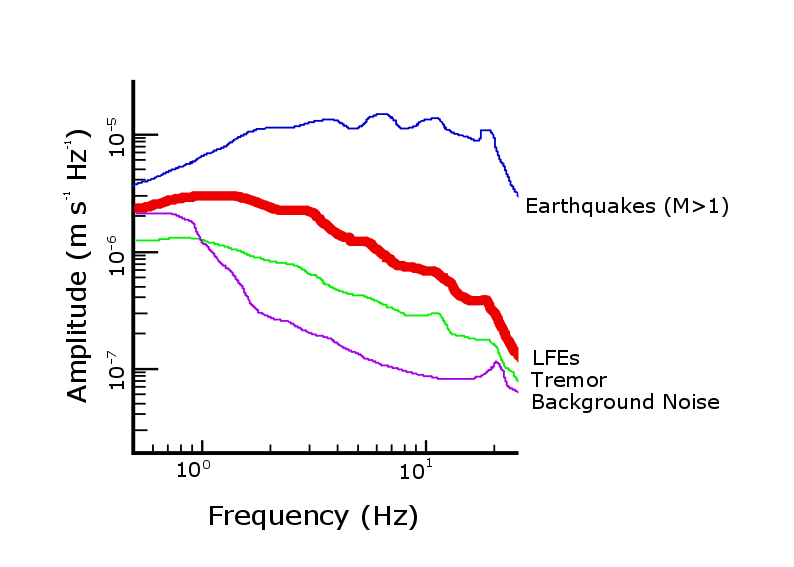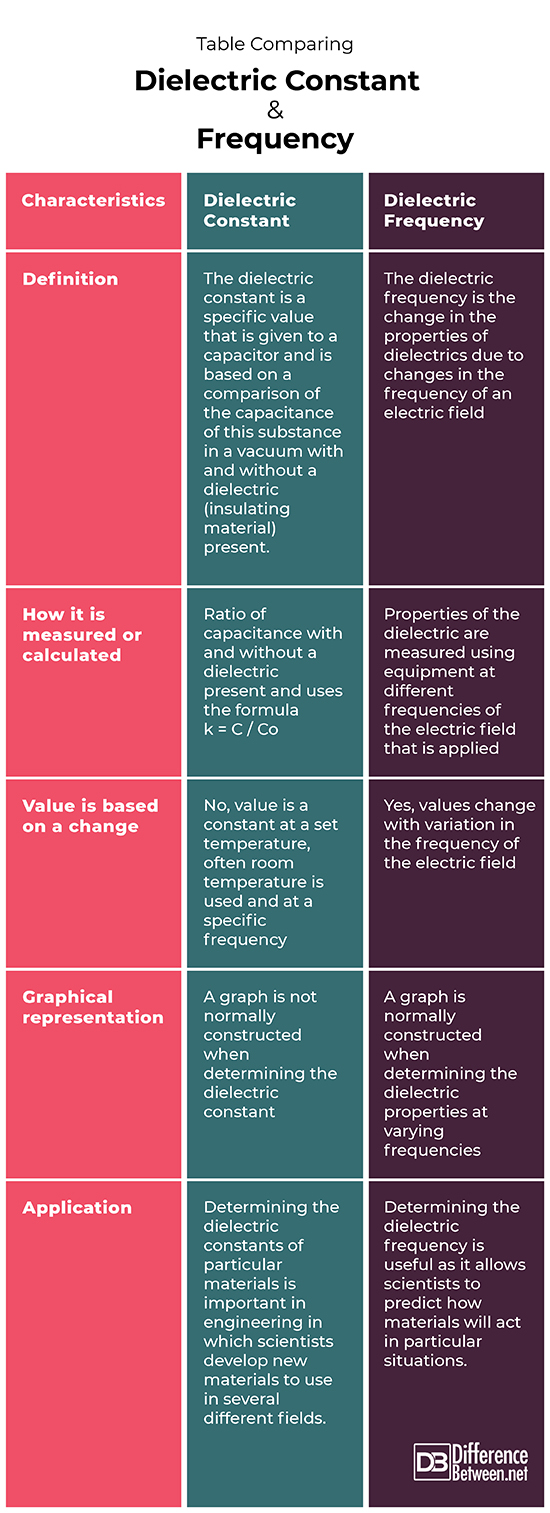Difference Between Dielectric Constant and Frequency
A dielectric constant is a value that is used to describe capacitance with and without a dielectric present. Dielectric frequency is a way to describe how the dielectric properties change when the electric field frequency changes.
What is Dielectric Constant?
Definition:
The dielectric constant is a specific value that is calculated and given to a capacitor and is based on a comparison of the capacitance of this substance in a vacuum with and without a dielectric (insulating material) present. A capacitor is defined as any device which is able to store an electric charge. Capacitance is really how easily a substance can store an electric charge.
How it is measured:
The dielectric constant is described using a formula in which k is the constant being calculated. The formula is k = C / Co where C is the capacitance when the dielectric is present while Co is the capacitance with no dielectric present. The value is always higher than 1 and has been determined for many substances at a specific temperature of 25 degrees Celsius. For example, the dielectric constants measured at room temperature (25 degrees Celsius) for water is 78.2, and for paraffin it is 2.25. Constants for bees wax are 2.8, for air is 1.0006 at this same temperature.
Application:
These dielectric constant values can change with changing temperature values since this impacts conductivity of materials. Knowing what the dielectric constants are of particular materials is important in engineering since the constants relate to energy loss and other important parameters that scientists need to know when designing new materials. This has been important today with the development of new polymers that can be used as dielectrics. The dielectric constant gives an indication of how well a substance can store electricity, which is an attribute that needs to be known when considering the uses and application of a particular substance.
What is Dielectric Frequency?
Definition:
The dielectric frequency is the change in the properties of dielectrics due to changes in the frequency of an electric field. The ability of a dielectric to store energy really depends on the frequency of the electric field that is applied at any given moment. This phenomenon is known as dielectric dispersion.
How it is measured:
The change in dielectric properties can be calculated for different frequencies. Dielectric spectroscopy is the name for the method used to measure these properties at various and different frequency values. A graph can often be constructed in which changes in various properties can be noted at increasing frequencies of electric fields. The graph can show how electrical charges are changing.
Application:
Recording how the dielectric properties change at varying electric field frequencies is crucial in allowing scientists to understand how a particular material acts in different conditions. For example, knowing the dielectric at microwave and radio frequency waves is useful in fields of research such as communication and material sciences. The knowledge gained from experiments on dielectric properties of materials and how they are altered at varying frequencies allows scientists to predict the behavior of such materials and if they will be suited for a particular application.
Difference between Dielectric constant and Frequency?
Definition
The dielectric constant is a value for a specific capacitor based on having a certain type of dielectric present. The dielectric frequency is a measure of how properties of dielectrics change in accordance with changes in the electric field.
How it is measured or calculated
The way that the dielectric constant is measured is that a reading is taken of capacitance with and without a dielectric present, and then a formula is used to determine the constant based on this ratio. The way that the dielectric frequency is measured is that the properties of the dielectric are determined with changes in the frequency of the electric field.
Value is based on a change
With the dielectric constant, the value is a constant at a set temperature; often room temperature is used and it is recorded at a specific frequency. With the dielectric property, the values of dielectric properties change as the frequency of the electric field changes.
Graphical representation
A graph is not normally constructed when determining the dielectric constant. A graph is normally constructed when determining the dielectric properties at varying frequencies
Application
Determining the dielectric constants of particular materials is important in engineering in which scientists develop new materials to use in several different fields, and it allows them to know in which situations a material can be best used. Determining the dielectric frequency is useful as it allows scientists to predict how materials will act in particular situations.
Table Comparing Dielectric Constant and Frequency
Summary of Dielectric Constant Vs. Frequency
- The dielectric constant is a value that is calculated for a capacitor with and without a dielectric material present.
- The dielectric frequency describes the change in dielectric properties in accordance with variation in the electric field that is applied.
- Knowing both the dielectric constant and frequency of materials is useful in engineering applications.
- Difference Between Rumination and Regurgitation - June 13, 2024
- Difference Between Pyelectasis and Hydronephrosis - June 4, 2024
- Difference Between Cellulitis and Erysipelas - June 1, 2024
Search DifferenceBetween.net :
Leave a Response
References :
[0]Ahmad, Zulkifli. "Polymer dielectric materials." Dielectric material. IntechOpen, 2012.
[1]Badr, Aly M., Haroun A. Elshaikh, and Ibraheim M. Ashraf. "Impacts of temperature and frequency on the dielectric properties for insight into the nature of the charge transports in the Tl2S layered single crystals." Journal of Modern Physics 2.01 (2011): 12.
[2]Image credit: https://en.wikipedia.org/wiki/File:Seismic_amplitude_vs_frequency.png
[3]Image credit: https://commons.wikimedia.org/wiki/File:Dielectric-constant.jpg



